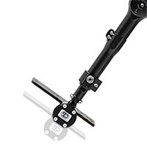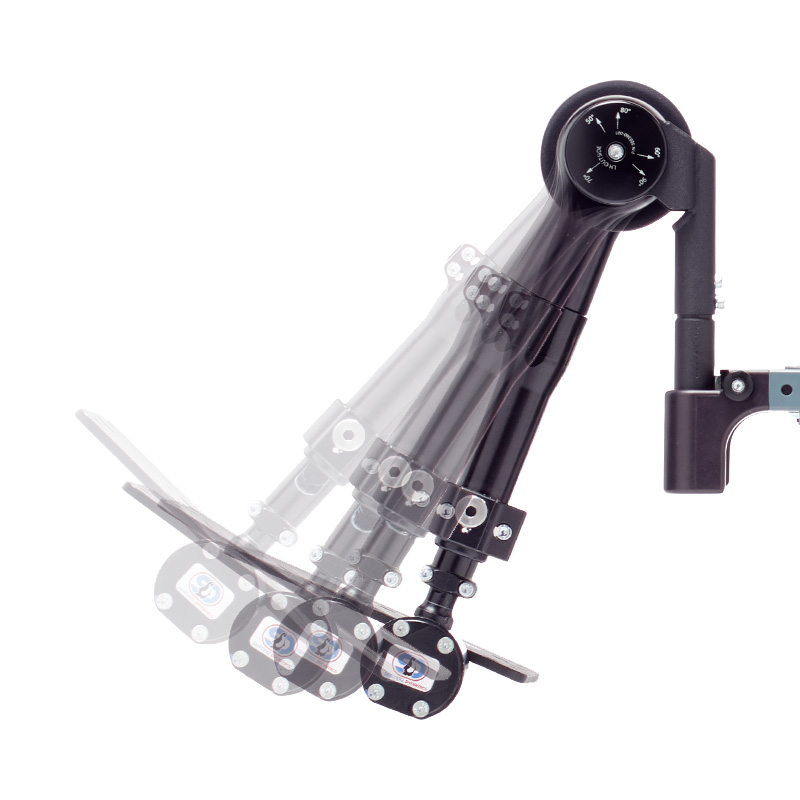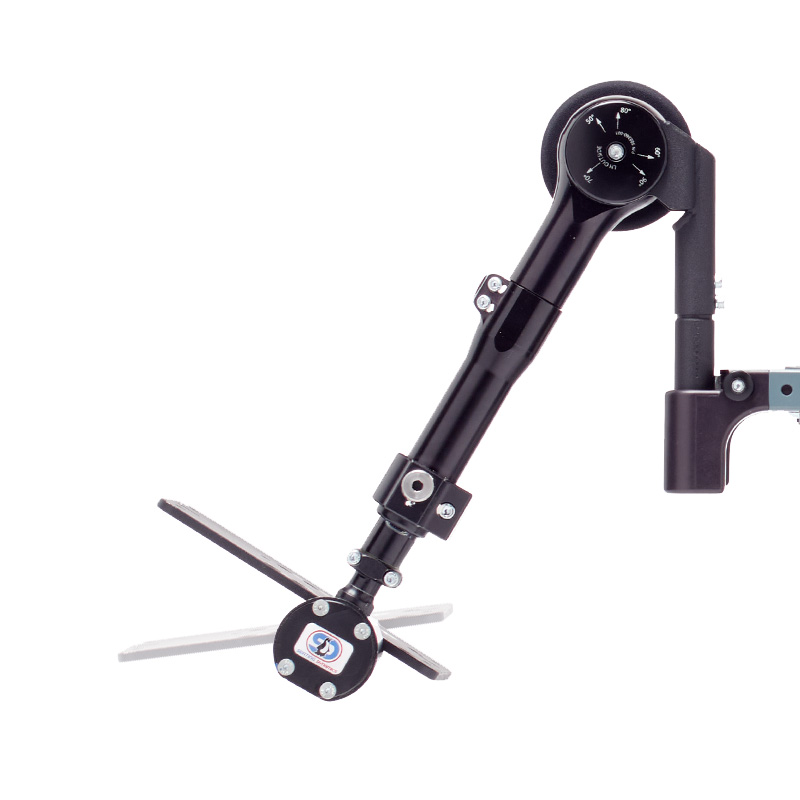Maintenance Time! The Dynamic Footrests
Michelle L. Lange, OTR/L, ATP/SMS
In a prior blog, we addressed maintenance for the Dynamic Rocker Back interface (DRBi). Just as force and movement can lead to wear of the elastomers in the DRBi, the Dynamic Footrest contains components meant to absorb forces and, as such, as prone to wear.
If a client moves with force in a static seat and wheelchair frame, the frame and mounting hardware take the force and can move out of alignment or even break. Dynamic Seating uses elastomers, springs, and/or hydraulics to absorb force, store energy, and return the client to a starting position. Instead of the wheelchair frame breaking, the dynamic component will wear and require replacement.
The Seating Dynamics Dynamic Footrests include 4 possible movements:
 Telescoping movement
Telescoping movement
The telescoping movement utilizes springs which are quite durable and generally do not require replacement for wear and tear. These can be changed to provide a different level of resistance.
Knee extension

 Knee extension utilizes elastomers which should be checked at least twice a year. If the client is moving into knee extension too readily, the elastomers most likely need to be replaced. The caregiver can lift a new dynamic footrest into knee extension, without the weight of a foot on it, to get a feel for the resistance and smoothness of operation. This check can be performed routinely, as often as monthly, to assess condition – if the footrest is not moving smoothly and demonstrating consistent resistance, elastomer replacement is likely required. Depending on frequency and force of movement, the elastomers will wear more quickly. The resistance level of knee elevation cannot be changed.
Knee extension utilizes elastomers which should be checked at least twice a year. If the client is moving into knee extension too readily, the elastomers most likely need to be replaced. The caregiver can lift a new dynamic footrest into knee extension, without the weight of a foot on it, to get a feel for the resistance and smoothness of operation. This check can be performed routinely, as often as monthly, to assess condition – if the footrest is not moving smoothly and demonstrating consistent resistance, elastomer replacement is likely required. Depending on frequency and force of movement, the elastomers will wear more quickly. The resistance level of knee elevation cannot be changed.
 Plantar / dorsi flexion
Plantar / dorsi flexion
The resistance of the plantar and dorsi flexion feature cannot be changed, however these elastomers can wear out. The resistance should be checked at least twice a year. If the client is moving into plantar or dorsi flexion too readily or not returning to a starting position, the elastomers most likely need to be replaced.
Rotation
Footplate rotation uses 1 – 2 springs which are unlikely to require replacement.
So, take a moment to check the elastomers in the Dynamic Footrests that you are working with. Make sure replacement is not indicated and that resistance is optimal. Take the time to educate the consumer and caregivers so that they can also monitor the Dynamic Footrest for possible issues. Replacement kits are available for each of the Dynamic Footrest movements – replacing just the necessary components. New elastomers will ensure optimal performance!
For more information, check out our Quick Class on Dynamic Seating Maintenance here.
For more information about determining the optimal resistance, click here.
